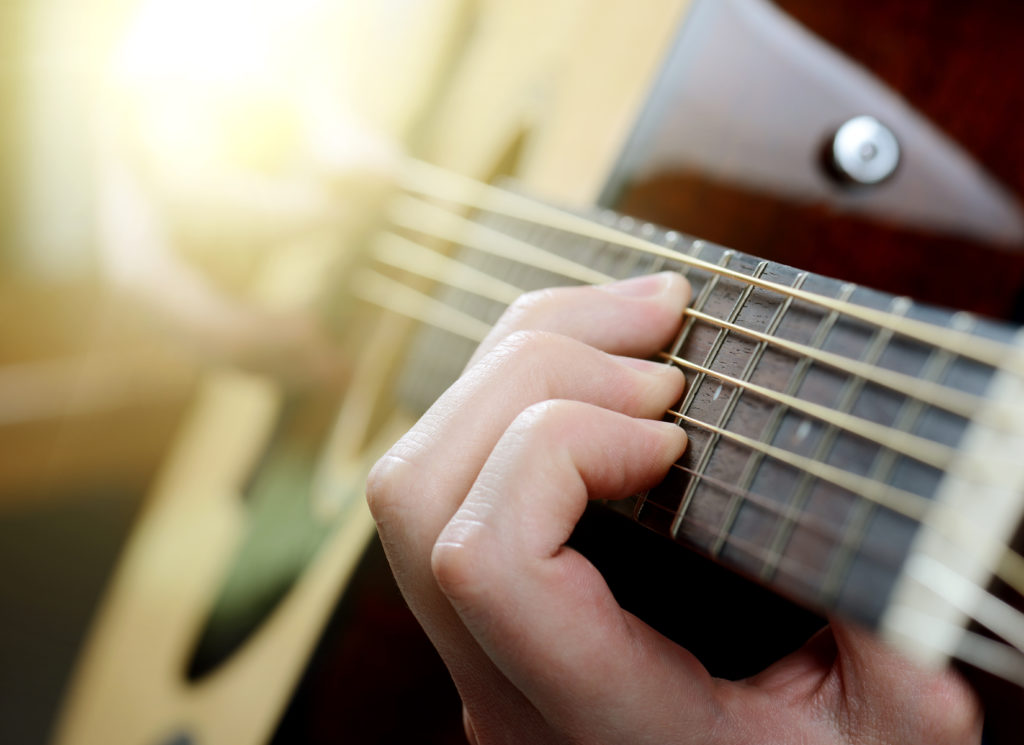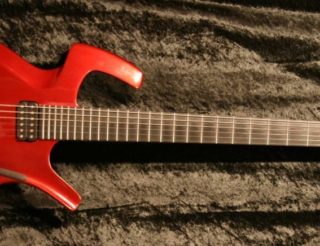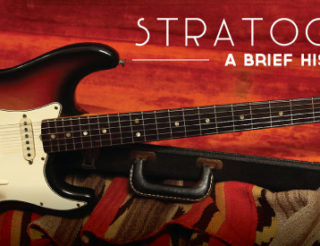What Guitar Strings Should You Buy Part 2: Classic and Electric Guitars
Author: Graeme Hague

In “What Guitar Strings should You Buy Part 1” we looked at how to choose the best new strings for your acoustic guitar. We recommend you read this first, because it has some great information that applies to all types of guitars and strings that will help. Then come back here, where we’re talking about the specifics of how to do the same for your classical or flamenco guitar, and for your electric guitar. Yes, they’re two very different things, but with a lot of that basic practical advice covered in the previous blog, now we can focus on these two types of instrument together.
Table of Contents
Classical Guitars
The main difference between steel string guitars and classical is that nylon strings create a lot less pull on the neck and therefore most classical guitar types don’t have a truss rod built in (although it’s becoming popular with some luthiers to include one). For classical guitars it’s all about the choice of timbers used in construction and good design. Which in turn means that choosing the correct gauge for your guitar is really important, because there is no truss rod to compensate with any necessary adjustments.
 Nylon guitar strings are rated in different “tensions” such as Light Tension, Normal Tension and Hard Tension. Some guitar string manufacturers also have an Extra Hard Tension. The characteristics of these varying tensions are what you’d expect — with higher tensions comes more volume and tone, but they can be more demanding to play. The Extra Hard Tension sets put the most stress on your guitar neck, so if you’d like to use these make sure your guitar is robust and well-built enough to handle them. Take your guitar into a music store and check with an expert that your instrument can handle any heavier gauges.
Nylon guitar strings are rated in different “tensions” such as Light Tension, Normal Tension and Hard Tension. Some guitar string manufacturers also have an Extra Hard Tension. The characteristics of these varying tensions are what you’d expect — with higher tensions comes more volume and tone, but they can be more demanding to play. The Extra Hard Tension sets put the most stress on your guitar neck, so if you’d like to use these make sure your guitar is robust and well-built enough to handle them. Take your guitar into a music store and check with an expert that your instrument can handle any heavier gauges.
Different types of nylon can be bought. Clear Nylon is the most common with a clean, nice tone that can vary slightly across the different strings — something most players like. Rectified Nylon is actually manufactured with more care to avoid that variation in quality, but the exacting process removes some of the brightness (go figure…). Similarly, Black Nylon strings are made with precision and provide an accurate tone with some added zing in the top end. Finally, Titanium Nylon strings sound even more bright and if you’re competing with other instruments in a band these can give you extra presence.
Traditionally, nylon guitar strings are tied onto the bridge. It’s a small skill and easily learned. Some more modern designs need a ball-end string the same as a steel string guitar. Make sure you buy the right type. Most important of all, when you replace your nylon strings remember that new sets will stretch forever. It will take some time before new strings will settle into correct tuning and stay there. Like, a long time…
In case you haven’t read the previous post, it’s worth repeating — get into the habit of cleaning your strings after each session. Even a quick wipe with a clean cloth will help tremendously towards extending your string life.
Electric Guitars
Every guitar — acoustic, classical or electric — has its own unique sound due to its construction, design and types of timber. Electric guitars have the added complexity of the electronics installed. What sort of pickups it has, their position and number, and the switching available between them. Then consider that most electric guitar players use an array of stomp boxes, signal processors, different speaker cabinets and amplifier heads… well, let’s say the original and clean sound of the guitar gets a little lost in the technology and choosing the composition of your strings such as steel, nickel or chrome can seem a bit pointless. All the same, it’s worth knowing that if you think of steel strings as the standard, then nickel or chrome give you more tonal warmth while cobalt and titanium strings add brightness. You can buy “long-life” versions of these with a polymer coating to protect against corrosion. With all of them, regularly replacing your strings provides renewed clarity and sustain — the latter being very important for playing lead. This is always true and very audible regardless of the size of your guitar rig. It’s simple, new strings sound great.
 The biggest consideration for choosing the best electric guitar strings for you is your own playing style. If you’re planning to be a lead guitarist who shreds, bends strings and does lots of hammer-on and hammer-off playing, then you need a light or medium light gauge. If power chords, drop-D tunings and jumping off the speakers stacks as you thrash a huge grunge sound is your thing, heavier strings will be the go. There’s nothing more disappointing than hearing that dreaded twang of a string breaking just as you’re about to be the awesome rock star of the gig.
The biggest consideration for choosing the best electric guitar strings for you is your own playing style. If you’re planning to be a lead guitarist who shreds, bends strings and does lots of hammer-on and hammer-off playing, then you need a light or medium light gauge. If power chords, drop-D tunings and jumping off the speakers stacks as you thrash a huge grunge sound is your thing, heavier strings will be the go. There’s nothing more disappointing than hearing that dreaded twang of a string breaking just as you’re about to be the awesome rock star of the gig.
Setting up an electric guitar for your preferred guitar string gauge isn’t easy. Added to the truss rod tension is string length and height adjustments at the bridge (called the intonation of your instrument). It’s a cool skill to learn and valuable in the future, especially if you’re out on the road and a good guitar technician isn’t within a hundred miles. But until you’re completely comfortable making these delicate adjustments leave it to the experts.
You’re Not Alone
It’s worth remembering that people who sell and work with guitars usually love their job. As I’ve said before, don’t hesitate to take your own guitar into a music store, ask about the instrument’s set-up and what guitar strings you’d like to use — and you’ll end up chatting for hours, and making new friends (and maybe buying lots of stuff you never intended).
After reading these two blogs you might be thinking it’s all a bit hard and over-complicated. No, it actually makes things a lot simpler, because remember — once you’ve settled on your preferred guitar strings, then always use these. It’s a one-off process you go through. Your playing will become accustomed to the feel and sound of your favourite strings and your guitar will maintain a constant tone and action.
Happy playing!








No comments yet - be the first.